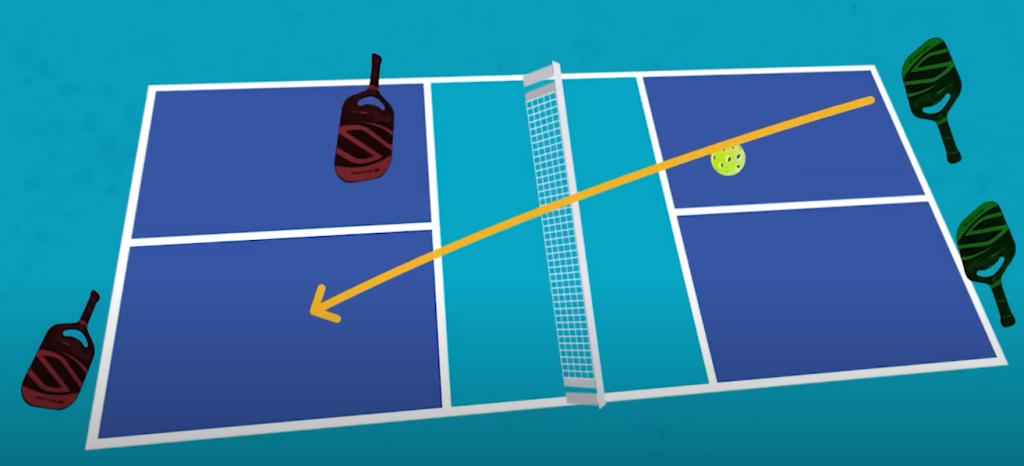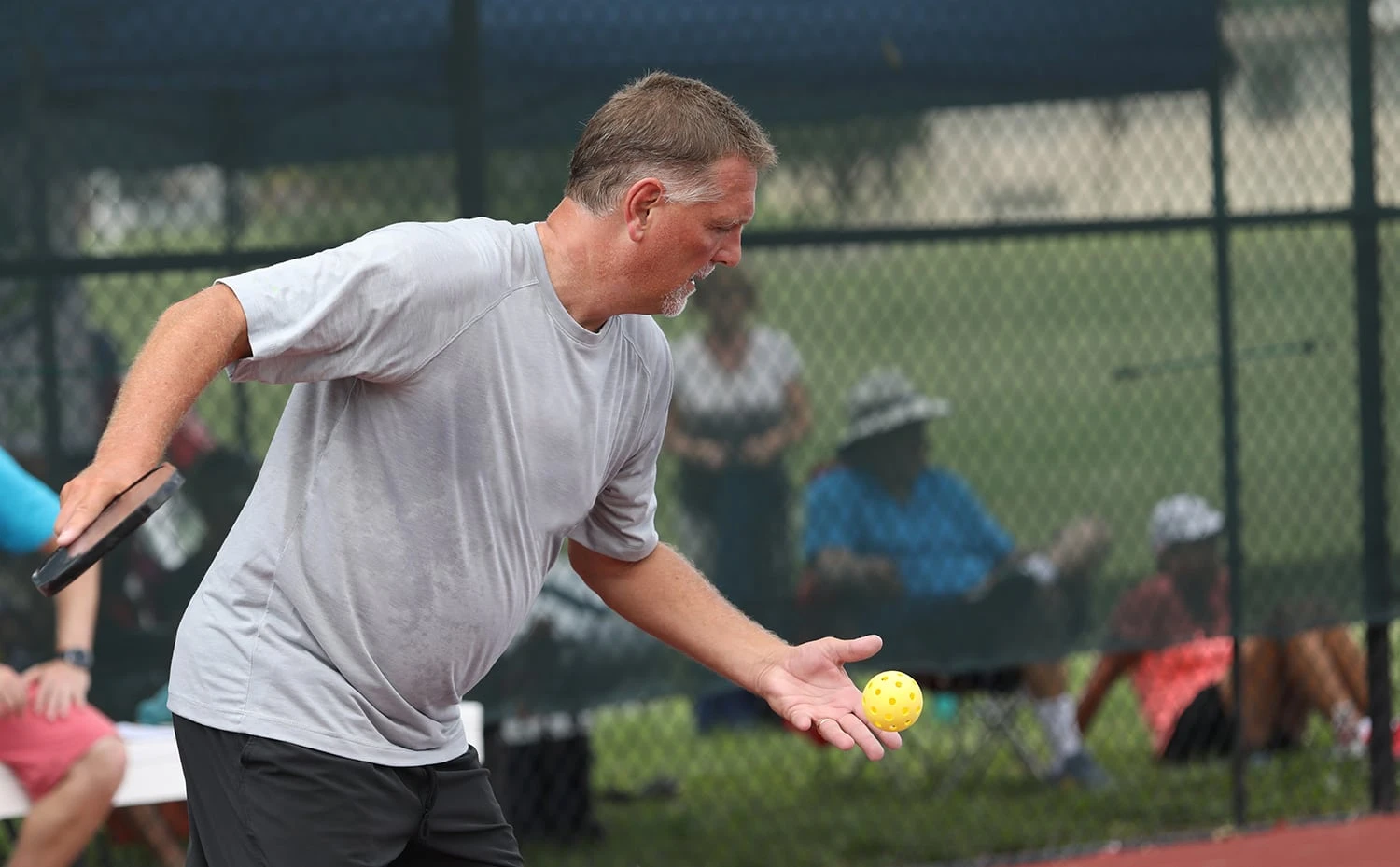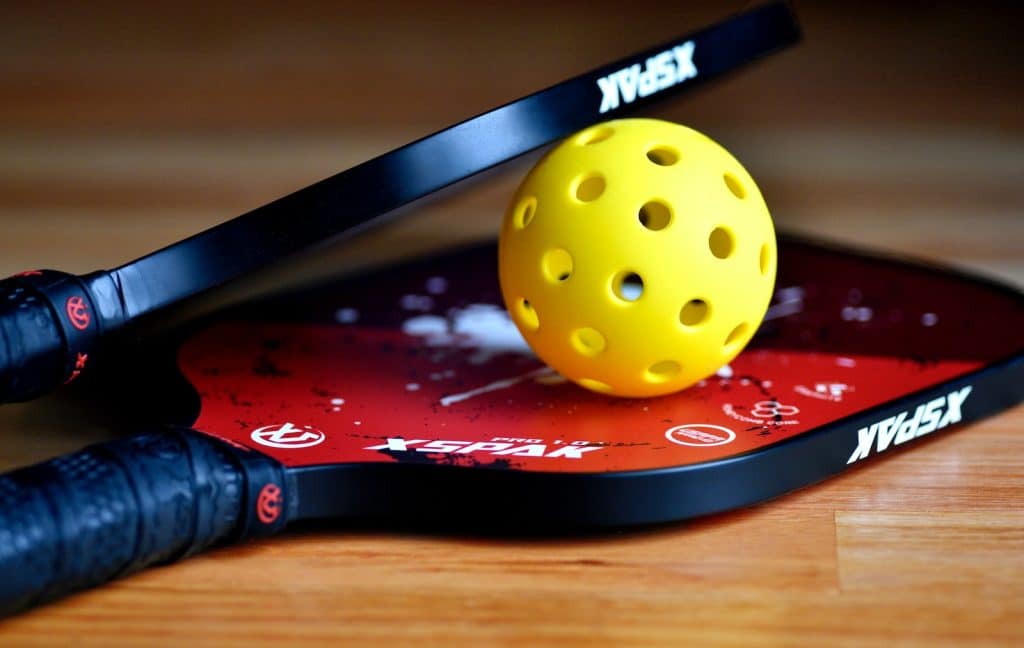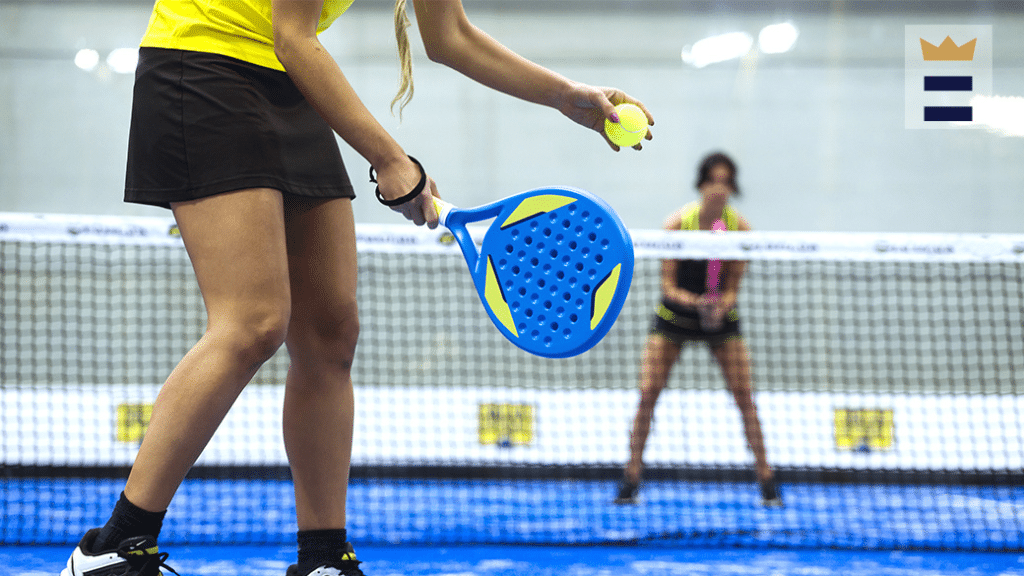Whether you’re a beginner to the sport or a seasoned veteran, you know a good understanding of pickleball serving rules is essential.
So to keep you on the right side of the rules, we’ve put together this quick guide on how serving works in pickleball.
Here, we’ll cover the rules, basic techniques, and tips to improve your serving game. Ready? Let’s dive in!
Table of Contents
Knowing the Rules Makes Pickleball More Enjoyable
Familiarity with pickleball’s serving rules and procedures leads to smoother games and more enjoyment for all players. Knowing the boundaries, technique, sequence, and scoring around serving prevents unnecessary faults, arguments, and confusion.
According to the 2024 rule changes (Rule 4.B.9), faults for incorrect server, receiver, and player position errors are eliminated. Referees now correct player position errors before calling the score, streamlining the serving process and reducing faults related to positioning.
What are the 5 Serving Rules in Pickleball?
There are 5 core rules you need to remember:
- Underhand Stroke: Your paddle swing must be an underhand motion, starting below your waist and moving upwards when contacting the ball. No overhand or sidearm swings allowed!
- Footwork: At least one foot must be behind the baseline when you hit the ball. Neither foot can touch the baseline or court lines inside the service zone.
- Diagonal Serve: The ball must be served diagonally to the opposite service box on the other side of the court. It can land anywhere within that box, including the lines.
- One Serve Attempt: There’s only one chance to serve. If you fault (break any serving rule), your opponent scores a point, and the serve switches to your partner.
- Double Bounce Rule: Both you and your opponent must let the ball bounce once on your own side of the net before volleying it back. Serves are no exception, they must bounce too!
The guys over at pickleheads.com created this neat infographic:

Basics
Underhand Stroke

The serve must be made with an underhand stroke. The contact point of the paddle must be below the server’s waist. No overhand hits like in tennis are allowed. Players can opt to do a drop serve by simply dropping the ball and hitting it, or a volley serve for more power.
Footwork

At least one foot must be behind the baseline when serving. Neither foot is allowed to touch or cross the baseline or sideline. Jumping serves are not permitted. Your foot may hover over the baseline, but one foot must always be on the ground when serving.
Direction and Placement

The serve must be made diagonally crosscourt into the service box on the opposite side. So a right court serve would go diagonally into the left court service box. The serve can land anywhere within the lines of the service box.
One Serve Attempt
Players get one chance to execute a legal serve. There are no “let” serves like in tennis where you get a second chance if the serve clips the net. Any improper serve is a fault and results in loss of serve.
Advanced Serve Techniques
Now that we’ve covered the basics, let’s discuss some more advanced serve strategies and options.
2024 Rulebook Update
Volley Serve vs. Drop Serve
There are two main types of legal serves in pickleball:
- Volley Serve: Hitting the ball out of the air without a bounce. This allows for more power and spin on the serve. However, it requires solid timing and coordination.
- Drop Serve: Dropping the ball and hitting it after one bounce. This is an easier serve to control, but lacks the potential speed and spin of a volley serve.
When starting out, the drop serve is recommended for consistency. But developing a volley serve can be advantageous once your game improves.
Spin Techniques
Adding spin to your serve can make it more difficult for opponents to return well. Some common spin types and how to execute them:
- Topspin: Hit slightly under the ball with an upward swing to drive the ball forward. Good for power serves.
- Underspin: Almost scoop under the ball with a downward motion to create backspin. Results in high bounces.
- Sidespin: Swing paddle slightly angled during contact to generate sideways spin. Challenging for opponents to judge.
Experiment with spin to keep opponents guessing and expand your serving arsenal. Just maintain control to avoid faults.
Placement Strategies
You can employ different placement tactics with your serves:
- Deep serve: Hit deep into the service box to force the receiver back. Makes their return more difficult.
- Short serve: Land the serve short in the box to draw the receiver up and open the court behind them. Allows you to move forward.
- Center serve: Serve down the middle to split defenders in doubles or deny angles.
- Wide serve: Serve out wide to the edges of the box to pull defenders outside. Opens passing lanes.
Varying placement rather than serving repetitively to the same spots keeps your opponents off balance. Observe their positioning and tendencies to target weaknesses.
Double Bounce Rule
The two-bounce rule, as emphasized in the 2024 rulebook (Unique Features Section), is fundamental in serving and returning. Understanding this rule is essential for all players to ensure fair play and strategy implementation.

A key rule in pickleball is that the ball can only bounce once on each side before being returned. The serve itself counts as the first bounce.serv
So on the return, the receiver must hit the ball before it bounces again. If the ball bounces twice on the receive, it is a fault and the server wins the point. This speeds up the pace of play.
The double bounce rule significantly influences strategy around serving and returning. The server can use speed and spin to make the return difficult off one bounce.
Serving Sequence
In singles play, the first serving player continues serving until they commit a fault and lose the serve. Then the serve rotates to the opposing player.
In doubles, only one partner on the starting serving team gets to serve their team’s first round. After that team faults, the serve passes to the first server on the opposing team.
From there on, serving rotation continues in sequence between teams after each fault. You must keep track of the sequence to know which player should properly be serving.
Let Serves
A let serve occurs when the ball from the serve clips the net and still lands inside the service box. This is a legal serve and it should be replayed without penalty.
Opponents who obstruct a let serve and prevent the ball from landing in the service box will lose the point. Players should call “let” aloud when a let serve occurs to avoid confusion.
Let serves are common when employing under spin or side spin serves. Do not assume it’s a fault if the ball clips the net during the serve.
Serving Faults
In light of the 2024 rulebook updates, ensure your paddle meets the updated specifications (Section 2.E). This includes aspects like materials, surface, and permissible alterations, which can directly affect your serve’s legality.
There are several types of serving faults which lead to loss of serve:
- Foot fault – Server steps on or over the baseline before the serve.
- Double hit – Hitting the ball twice on the serve attempt.
- Net serve – Hitting the net on the serve when the ball doesn’t land in the box.
- Out of bounds – Serving wide outside the boundaries of the service box.
- Wrong court – Serving into the wrong diagonal service box.
What is an Illegal Serve in Pickleball?
Here are the illegal serves you should watch out for:
- Missed Serve: A serve attempt where the ball is not successfully contacted.
- Baseline Violation: Stepping on or beyond the baseline during the serve.
- Bouncing Ball: Hitting the ball after it has bounced on the ground.
- Unclean Strike: Failing to hit the ball cleanly with the paddle (e.g., catching, holding, or scooping).
- Incorrect Court Serve: Serving the ball into the wrong court.
- Out of Turn Serve: Serving when it’s not the server’s turn.
- Screen Serve: Blocking the receiver’s view of the serve.
- Net Contact: The ball hitting the net and not going over during the serve.
Avoid foot faults by starting well behind the baseline. Call faults clearly to maintain fair play.
Serving Positions
In singles, players serve from anywhere behind the baseline and within imaginary extensions of the sideline.
In doubles, servers must follow “right court-even court” rules. The first server on a team serves from the right side. The team’s second server serves from the left, or even court side.
Partners alternate serving this way. If there is confusion, call “right” or “even” before the next serve.
For a detailed understanding of service court definitions, refer to Section 2.B of the 2024 rulebook. This section provides precise definitions of the service court, non-volley zone, and other court areas, crucial for accurate serve placement.
Serving Etiquette
Proper etiquette around serving includes:
- Calling the score audibly before each serve
- Waiting until the receiving team is ready
- Not overly delaying serves to disrupt timing
- Saying “Thank you” when opponents call your faults
Following etiquette rules helps ensure positive and fair competition. Don’t let great serves overshadow your sportsmanship.
Faults and Consequences
The penalty for a fault on the serve is loss of serve, with some exceptions:
- In singles, the server switches after a fault.
- In doubles, the serve rotates following the sequence.
- However, if receiving team commits any fault on service return, it results in point for the serving team.
So while the server is penalized for faults, the receiver can also be penalized if they incorrectly return the serve. Know the infractions to avoid errors.
Tips for Mastering the Serve
Here are some final tips for improving your pickleball serve:
- Practice serving consistency to minimize faults
- Work on ball toss placement for volley serves
- Try different paddle grips like continental or handshake
- Focus on smooth weight transfer from back to front foot
- Aim for trajectories that maximize bounce difficulties
- Disguise spin and placement to keep opponents guessing
- Don’t forget to stay behind the baseline when serving
Perfect your service mechanics through repetition. An excellent serve is a huge pickleball advantage.
Conclusion
Mastering pickleball serving rules and technique provides a key edge over competitors. This guide covers the serve basics along with more advanced tactics to elevate your game.
Remember to practice legal positioning, aim for strategic placements, and develop controlled spin. Familiarize yourself with the rules to avoid faults and keep the serve in your favor.
With a well-executed and deceptive serve, you’ll keep opponents scrambling and immediately gain an offensive advantage. So hone your pickleball service game and watch your play improve!



